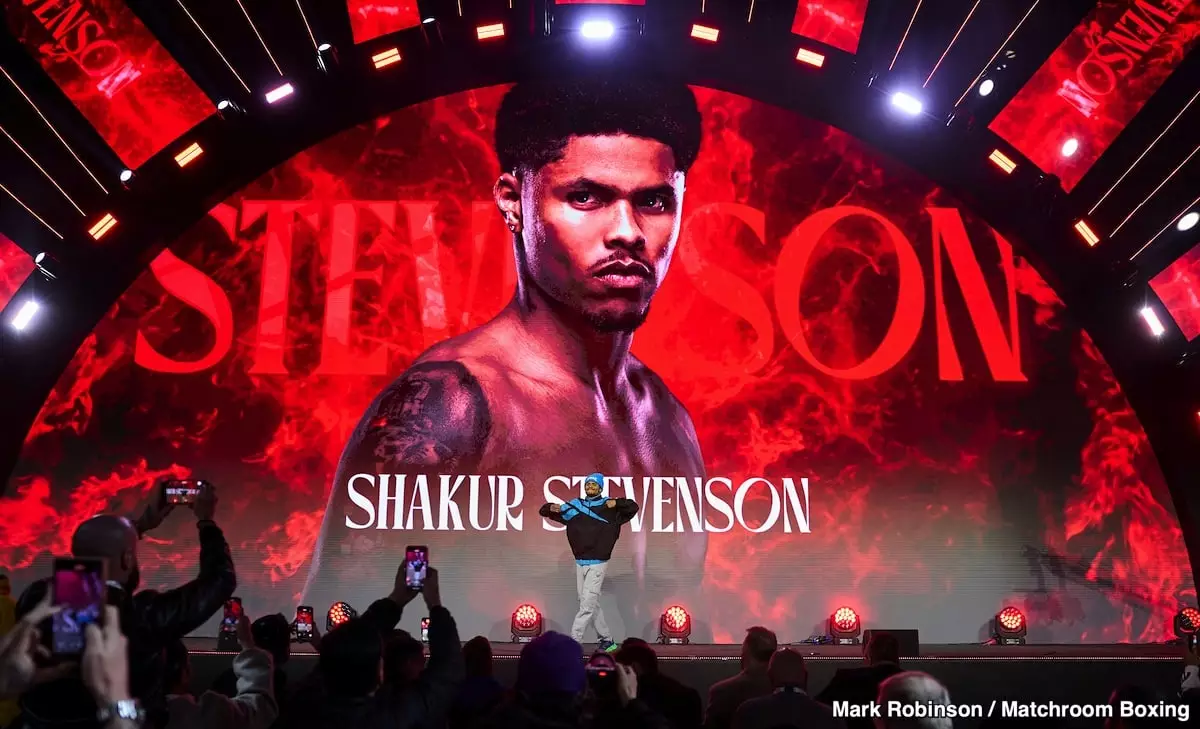Shakur Stevenson, a rising talent in the boxing world, is grappling with a palpable sense of disappointment stemming from his unsatisfied desire to face Vasily Lomachenko in the ring. Stevenson, a young fighter with enormous potential, moved up to the lightweight division, eagerly anticipating what he perceived to be a pathway to greatness. Given Lomachenko’s stature as a three-time world champion, Stevenson assumed that their paths would eventually cross. However, what should have been an exhilarating matchup turned into a bitter disappointment for the young fighter, who feels slighted by the avoidance of a legendary figure he has long admired.
The disappointment arises from the notion of dodging a challenge. Lomachenko, with a storied career that has inspired many in the boxing community, stands accused by Stevenson of sidestepping him. This sentiment holds weight considering the pressures and expectations that accompany high-profile matchups. Shakur’s bitterness is not merely a reflection of missed opportunities; it underscores the universal desire of athletes to prove themselves against the best. His struggle illustrates the dual pain of being overlooked in a sport where public perception often supersedes raw skill.
The Weight of Popularity
Stevenson’s dissatisfaction is compounded by the reality that his marketability has not risen to the heights that might compel Lomachenko to take him seriously as an opponent. The landscape of boxing often dictates that only the most popular fighters earn chances to compete against established champions. In terms of visibility, Stevenson remains in the shadows, having fought recently on an undercard that many casual fans may have missed altogether. The irony is that despite his evident talent, Stevenson’s ascension is hindered by the very system that rewards popularity over prowess.
Lomachenko’s unexpected disregard for Stevenson’s request can be interpreted as more than just a missed fight; it’s a reflection of the glacial pace at which boxing often operates. Athletes, particularly within the lightweight division, find themselves entangled within a web of negotiation and corporate interests that can stifle matchups that fans are eager to see. This dynamic leaves fighters like Stevenson in a perpetual state of limbo, awaiting their shot at greatness while watching opportunities slip through their fingers.
The Diminished Glory of Lomachenko
Now at 37 years old, Lomachenko’s skills, while extraordinary, are undeniably affected by age and the toll that consistent competition takes on a boxer. Despite this, his ability to remain competitive against formidable opponents, such as George Kambosos Jr., remains impressive. Stevenson, however, believes he has the potential to outmaneuver Lomachenko—a belief that further intensifies his frustration. With each passing day, Stevenson watches as other fighters seize opportunities that he feels should be rightfully his.
Yet, Stevenson’s argument about defeating Lomachenko is not robust. His offense seems insufficient compared to Lomachenko’s history of tactical supremacy and offensive fluidity. If the fight were to materialize, Shakur must confront the reality that Lomachenko, despite his slowing reflexes, possesses a remarkable knowledge of the ring that could easily pick apart a less experienced fighter. This observation leads to a significant point of contention: how much of Stevenson’s belief in his own skills is rooted in his desire for validation rather than an honest appraisal of his capabilities?
The Future: Hopes and Realities
As Stevenson looks to the future, the notion of waiting for a fight with Gervonta ‘Tank’ Davis looms large. Stevenson acknowledges that such a fight will occur on Davis’s timeline, further illustrating the power dynamics at play within the sport. It underscores the uncomfortable truth that, while Stevenson regards Lomachenko with nostalgia, his tangible prospects may be tied to opponents who have more market sway.
In interviews, Stevenson expresses a conflicted admiration for Lomachenko while simultaneously grappling with a sense of betrayal. To Stevenson, not only is this a matter of unfulfilled ambition; it is also an emotional landscape fraught with reverberations from unreciprocated respect. His critique of the barriers that shape boxing today reminds observers that behind every athlete’s ambition lies an intricate weave of admiration, rivalry, and the stark reality of the sport’s politics.
In a world where accomplishments are logged in the annals of glory, Shakur Stevenson proves that unfulfilled expectations can leave a lasting mark on a fighter’s psyche. The robust tapestry of boxing is woven with hopes, dreams, and adversities, and for Stevenson, each day brings a renewed determination to carve his path to legacy—a path that currently remains obscured by the shadows of those who entered the ring before him.


Leave a Reply